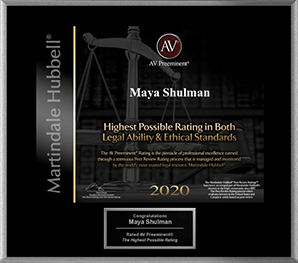
Restraining orders are also often referred to as “protective orders” and can help safeguard an individual from all types of physical/sexual abuse or harassment. The individual who files for a restraining order is referred to as the “protected person” and the individual against whom the order has been filed is called the “restrained person”.
Why You May Need A Restraining Order
There is no denying the fact that a divorce has the potential to bring out the worst in people. Typically, the bad/unacceptable behavior related to a divorce not only victimizes the other partner but could also have a negative impact on the children (if any). The actions of a resentful spouse could lead to significant financial and emotional hardship. The good news is that the effects of such behavior can be minimized with the help of a TRO or temporary restraining order.
There are certain conditions that qualify you to get a restraining order for domestic violence. You and the individual you wish to restrain should be:
1. Registered domestic partners or married
2. Dating or ex-dating partners
3. Divorce/separated
4. In a live-in relationship or former live-in partners
5. Parents to a child together
Types Of Restraining Orders
The California Courts provide four main kinds of restraining orders to civilians. Out of these, two are applicable to spouse-related situations. These are:
Domestic Violence Restraining Order (DVROs)
A person can request for a domestic violence restraining order in case they have suffered abuse from somebody with whom they share an intimate relationship (registered domestic partners/married/divorced/dating/separated/live-in partner and so on). This type of restraining order can also be filed for other close relations like in-laws, parent, sister, brother, grandfather, grandmother and so on.
The court generally considers ‘abuse’ as physical assault, sexual abuse, serious threats of hurting someone, harassment, stalking, hitting and destructing someone’s personal life and peace. If you’re suffering any of these abuses and are afraid or feel controlled by someone (for example, ex-spouse, current spouse, ex-boyfriend, or ex-girlfriend), it might be useful to consult a counselor specializing in domestic violence in order to get a restraining order.
There are some key advantages of getting a domestic violence restraining order. The restrained person gets an order from the court with regards to the following:
1. The restrained person cannot come near you or contact you or your relatives (including your children).
2. He/she will need to shift out of the common residence.
3. They would need to avoid your workplace and your kids’ schools besides staying away from the home.
4. Offer child support and partner/spousal support (if domestic partners or married).
5. Adhere to the visitation and child custody orders.
6. Possess no weapons, such as a gun.
Automatic Temporary Restraining Orders (ATROs)
There are some states in the United States, like California, that have adopted a very practical approach to maintaining the status quo between partners from the starting of the divorce proceedings. They use ATROs or Automatic Temporary Restraining Orders that automatically become effective as soon as the couple files for a divorce in the court.
What can an ATRO do? An Automatic Temporary Restraining Order is aimed to deal with potentially problematic situations and actions. Such orders could have terms related to whether or not a spouse can sell off a property, make changes to life insurance beneficiaries, take out money from joint bank accounts, move the children to another state before finalization of the divorce, and so on. The terms of an ATRO are equally applicable to both partners, irrespective of who filed for the divorce.
Maya Shulman, Esq.
Shulman Family Law Group
SFLG







